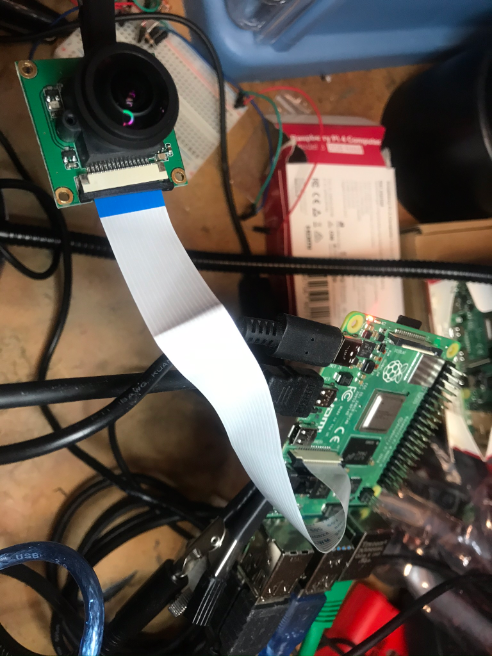While my allsky camera (www.gordtulloch.com/allsky) is working fantastically well, I’m also looking at making some projects that need a camera that doesn’t cost $400! In particular a standalone platesolver similar to what Celestron puts on their scopes (Skysense) which apparently does plate solves to let the scope know where it’s pointing, so no calibration is required. I do this already on my C8 in my observatory but I’d like to see if I can do it cheaply with a standalone wifi device. So, I’ve started to look at cameras – this one arrived today.

This is a version 1 camera, which has been around for quote a while. For under $20 (although 6 weeks for delivery!) how can you go wrong? And it includes a purported 175 degree camera! I’m planning on putting this in a case with a Raspberry Pi 4 and taking it out under the skies to see if I can get some decent exposures. First testing was positive – once I plugged it in I was able to get an image right away (see below.) Not pretty (the roof over my bench) but kinda cool.

Here’s what the camera looks like:

Essentially the Pi and camera will fit in a small project box, and using Wifi can connect to the telescope to update positioning. I already know the RPi4 will do plate solves lickety-split, so if the camera can do long enough exposures, should be a cheap way to get the system up and running!
The camera software available with the Pi includes raspistill, which takes stills from the camera. A couple of parameters will need to be played with:
--ISO, -ISO Set capture ISO (100 - 800)
--exposure, -ex Set exposure mode (including night mode)
--shutter, -ss Set shutter speed/time (max 6s on V1)
--analoggain, -ag Set analog gain on the sensor 1.0-8.0
--digitalgain, -dg Set gain applied by the ISP 1.0-64.0
--mode, -md Mode (resolution)
Version 1.x (OV5647)
Mode Size Aspect Ratio Frame rates FOV Binning
0 automatic selection
1 1920x1080 16:9 1-30fps Partial None
2 2592x1944 4:3 1-15fps Full None
3 2592x1944 4:3 0.1666-1fps Full None
4 1296x972 4:3 1-42fps Full 2x2
5 1296x730 16:9 1-49fps Full 2x2
6 640x480 4:3 42.1-60fps Full 2x2 plus skip
7 640x480 4:3 60.1-90fps Full 2x2 plus skipThe mode command is interesting in that a mode 7 would be a good camera for planetary work at 90 fps since you don’t really need high resolution for planets if they’re magnified enough.
I also have one of the new Raspberry Pi High Quality camera on order. This camera features a 12.3 megapixel Sony IMX477 sensor, 7.9mm diagonal image size, and back-illuminated sensor architecture, with adjustable back focus and support for C- and CS-mount lenses for $69.95. This means I can use the same kind of high quality lenses I used on my allsky camera, although I’ll definitely try some of the lenses I have lying around to see how they work. And with exposure times of up to 200s should be interesting what I can get out of it.

Stay tuned for more testing pictures!
